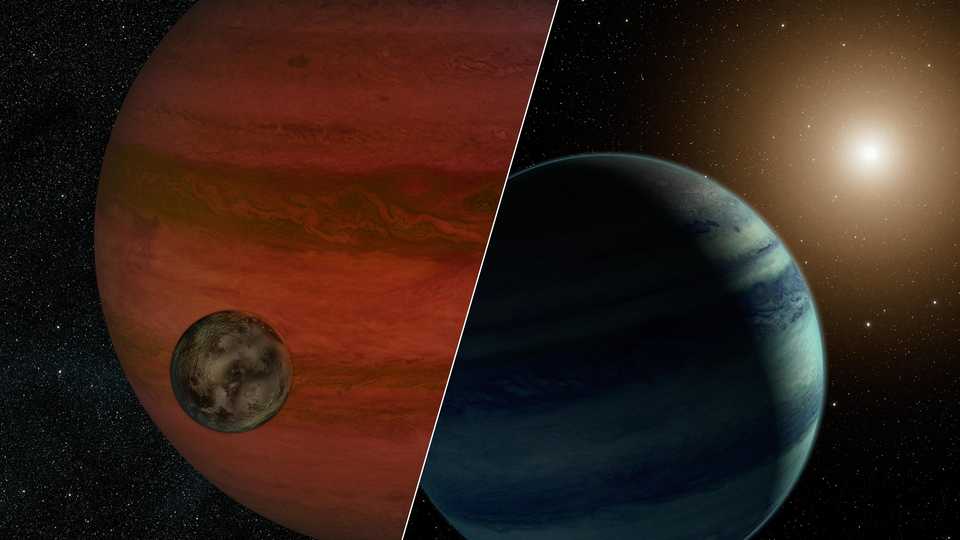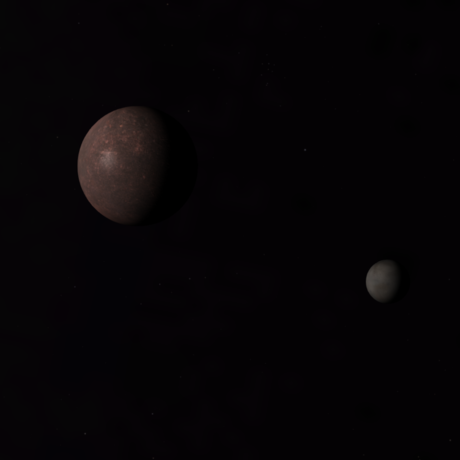Universe Update
Exomoon Exo-pectations

To date, 3,735 extrasolar planets (or exoplanets for short) have been found around other suns. However, how many exoplanets do we know for certain house life? That number stands at a big fat zero. Earth is still the only place we know for certain supports life of any kind.
That is not to say the potential doesn’t exist on these foreign bodies—exoplanetary study is still a nascent science; the first exoplanet was only found 26 years ago. In other words, it’s not them, it’s us—our current technology can find them, but not much more. Scientists are getting better at detecting planets all the time, and newly-launched and future missions like The Transiting Exoplanet Survey Satellite (TESS) and the James Webb Space Telescope (JWST) are powerful spacecraft better able to detect exoplanets and, for the first time, will return information on the nature of the worlds’ habitability. Their primary targets will be exoplanets like Earth, but a few scientists are pushing the envelope further.
Scientists Michelle L. Hill and Stephen R. Kane are seeking extrasolar life as well. But they’re not just searching for life on exoplanets. Their recent paper explores the possibilities of habitable moons (exomoons) orbiting giant exoplanets.
The idea is immensely intriguing.
Gas giant planets such as Jupiter can have dozens of moons… Jupiter has 69, at last count, and Saturn has at least 62. Uranus has 27. Neptune has 14. So far. See a pattern? Many of these moons are more like potato-shaped asteroids than the pleasantly spherical, potentially life-friendly moons that Hill and Kane are seeking, but that’s still a larger pool of potential homes for life than the few terrestrial planets that may exist in a planetary system. In their paper, Hill and Kane explore Kepler data about giant exoplanets and the possibility of detecting potentially habitable moons orbiting them. It’s been explored in science fiction as well, although it’s doubtful we will be lucky enough to find fuzzy Ewoks waving to us from a forest moon of an Endor-esque gas giant.
What determines a “habitable” place anyway? Water is a good starting point. On Earth, no living thing can survive without water. The presence of water is not necessarily a guarantee of life, but it is a requirement for life (as we understand it). The “Habitable Zone” is one rubric used to identify places where water is likely to exist. It’s the distance from a star at which an Earth-ish-sized planet’s surface would be warm enough for liquid water (not too hot, not too cold, the so-called “Goldilocks zone”).
In their study, Hill and Kane find more terrestrial planets than gas giants residing within the habitable zones of some stars. That matches our own solar system, yet Kepler has also detected about 70 gas giant exoplanets that seem to reside in their stars’ Goldilocks zone. If each gas giant has multiple large moons, the number of habitable exomoons might equal or even exceed the number of terrestrial planets. Hill and Kane take the data a step further and calculate the distances where hypothetical exomoons could exist around each giant exoplanet. Given the mass of a giant exoplanet, they estimate the realm of gravitational influence where a moon could be trapped in orbit. They are predicting the best places to begin searching when tools powerful enough for exomoon observation finally become a reality.
That’s one of the many complications with looking for habitable exomoons. Currently, no telescope has the power to pinpoint such distant, small objects; no one has ever observed an exomoon. And if there are multiple moons orbiting around a gas giant, their subtleties would be nigh impossible to discern.
Even if we could detect them, exomoons could be more challenging for life to survive on than a terrestrial exoplanet. Gas giants such as Jupiter have intense magnetic fields that can trap charged particles from their star, forming radiation belts that might envelop the moons and make them less hospitable to many forms of life. Plus, many moons may be too small and not stable long enough for life to take hold.
But even though moons may not be the ideal place to search for life, that does not completely rule them out as candidates. Within our solar system, scientists plan to explore Europa (an icy satellite of the gas giant Jupiter) with the Europa Clipper mission in the 2020s. They’ve deemed it a worthwhile candidate to probe for the possibility of life. It just goes to show that scientists will leave no stone unturned in the search for life, including exoplanetary moons.


